Working with the ‘Found Object’:
The initial project aimed to discuss coping mechanisms and escapism (e.g. drinking) through symbolic objects, drawing on the phrase “Half Empty / Half Full”:

(Fig. 1) Edward Cawood: page from sketchbook detailing initial ideas regarding combing glass, coins and water to discuss ideas of optimism/pessimism and escapism, 458x356mm, (2020)

(Fig. 2) Edward Cawood: storyboard grid showing 6 digital photographs depicting process of cleaning and assembling glass, coins and water, (2020)
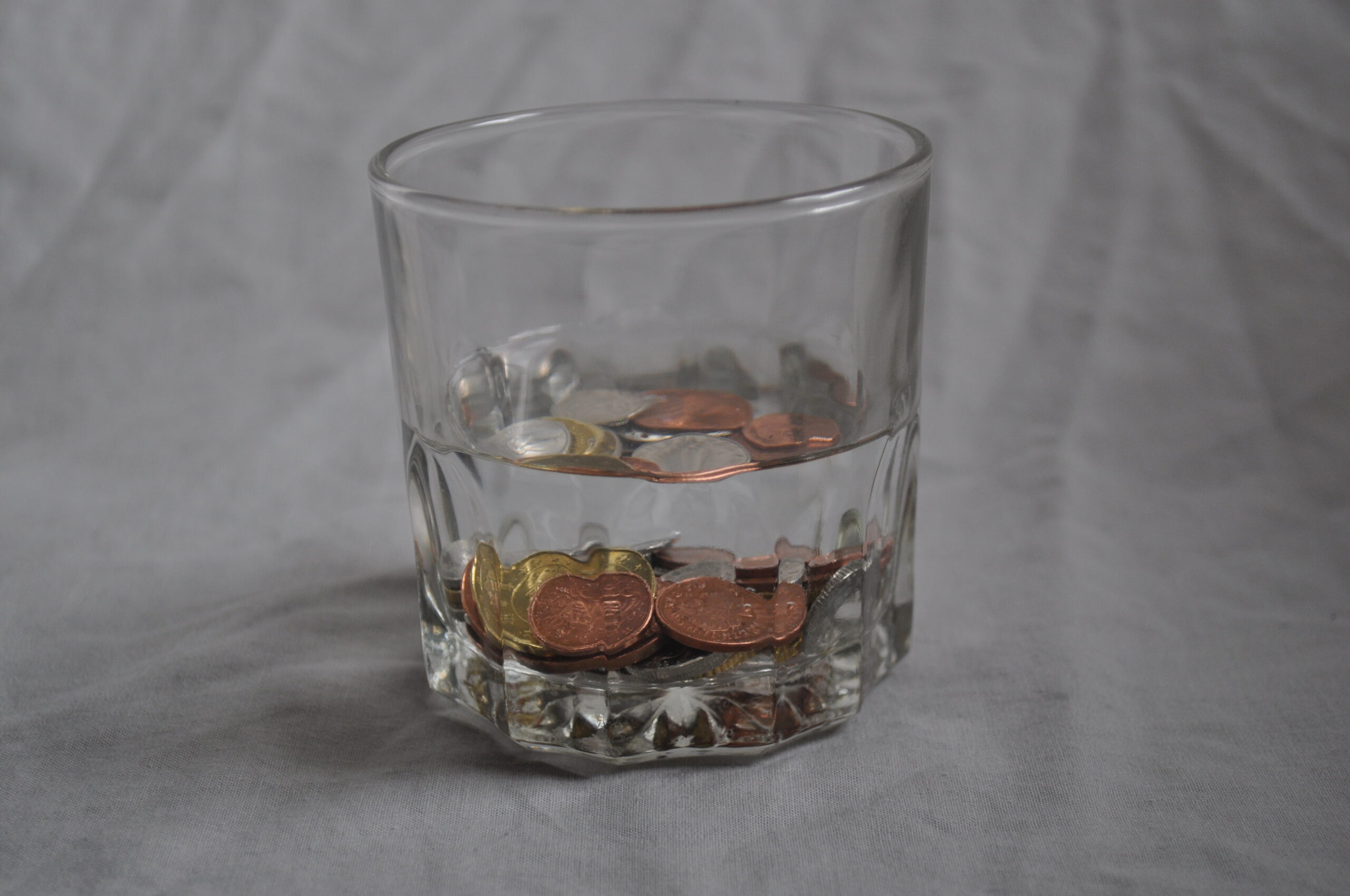
(Fig. 3) Edward Cawood: untitled – coins in glass against sheet, digital photograph, (2020)

(Fig. 4) INFLUENCE: Amikam Toren: ‘Simple Fractions X‘, Sculpture – glass, glue, wooden shelf and ink on paper, (1975)

(Fig. 5) Edward Cawood: ‘Half Empty / Half Full 1‘, sculpture – glass, water, mixed currency coins, upside-down wooden shelf, (2020)
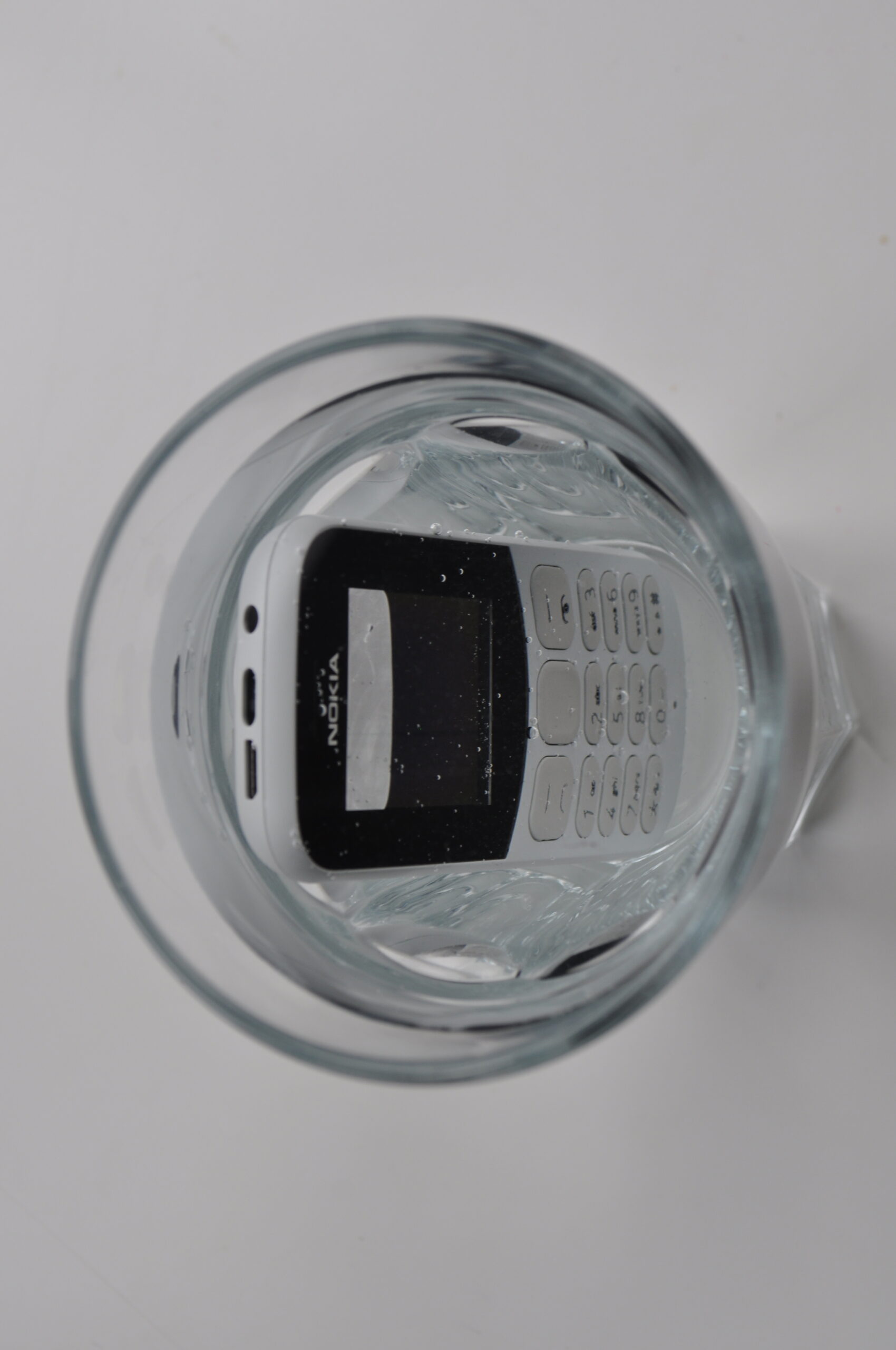
(Fig. 6) Edward Cawood: untitled – Nokia submerged in water, digital photograph, (2020)
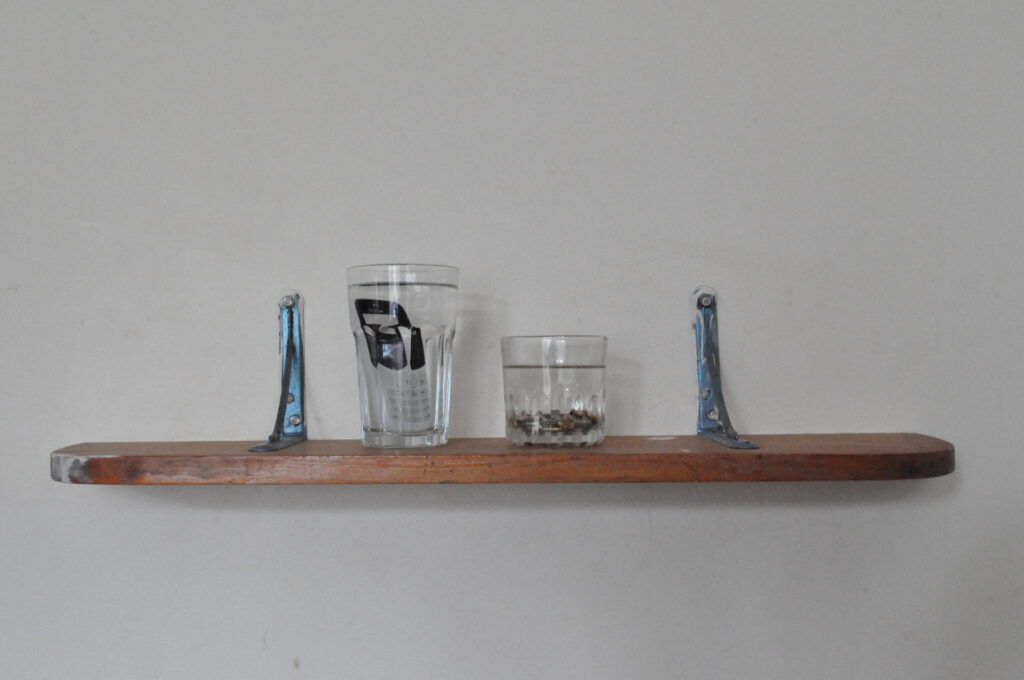 (Fig. 7) Edward Cawood: ‘Half Empty / Half Full 2‘, sculpture – glass, water, mixed currency coins, Nokia 130, wooden shelf, (2020)
(Fig. 7) Edward Cawood: ‘Half Empty / Half Full 2‘, sculpture – glass, water, mixed currency coins, Nokia 130, wooden shelf, (2020)
The first two sculptural pieces were somewhat successful in portraying the ideas behind their assembling. The submerged coins represent financial stress, resulting from or leading to drinking (symbolised in the choice of whiskey glass). The Nokia-130 represents communication and support networks, drowned and inaccessible in the water. The water creates a transparent barrier, reflecting and distorting the object, the reality.
Though thought-provoking, the objects, when placed on the shelf, lacked interactivity, creating distance from the viewer despite representing common circumstances. A key aspect is experiencing how the water and glass distort appearance, which, when made inaccessible, cannot be observed. Perhaps presenting the glasses centrally, allowing for 360 views to examine distortion, would have been a more effective, engaging presentation.
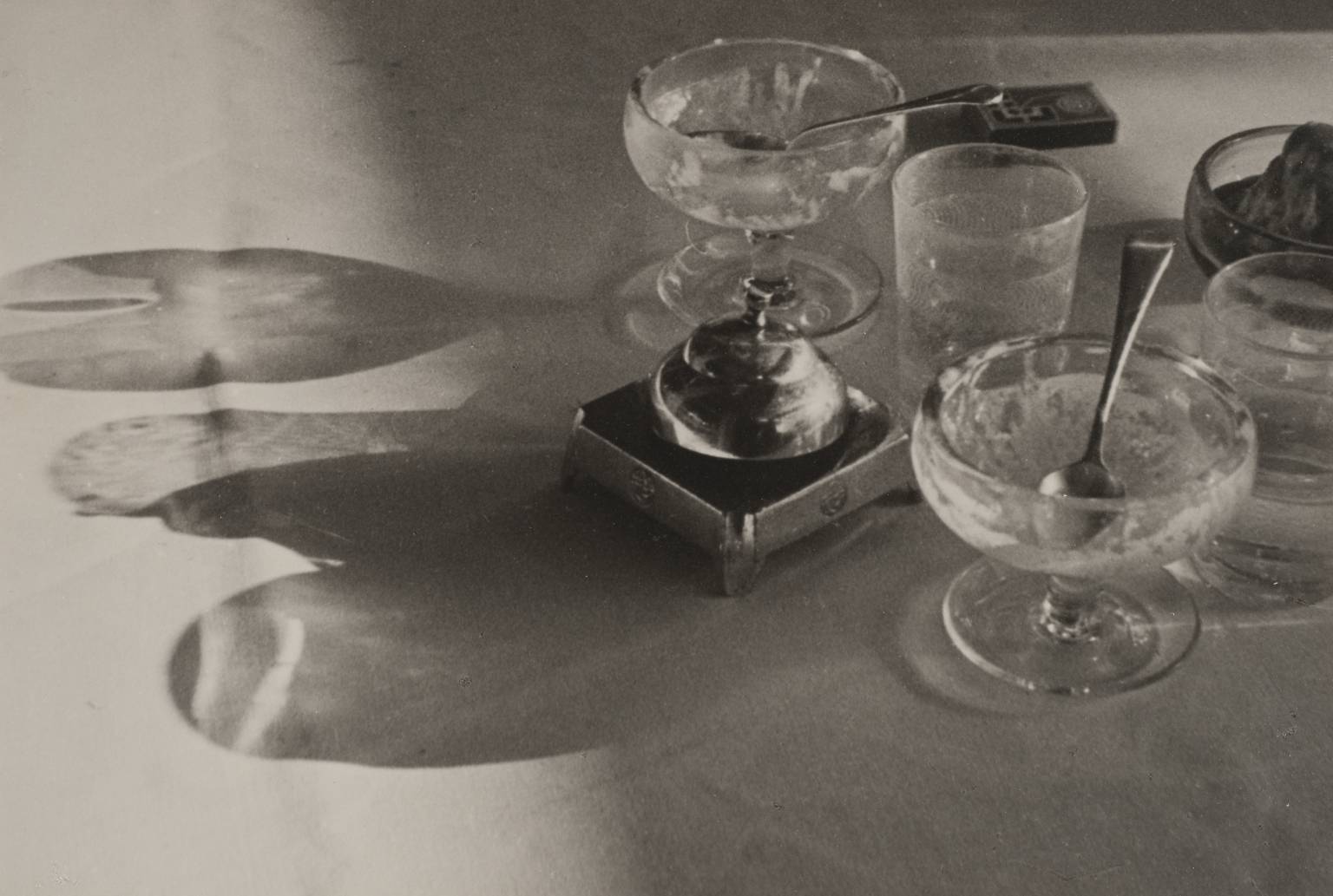
(Fig. 8) INFLUENCE: Shikanosuke Yagaki: ‘Still Life’, photograph – black and white silver gelatin print, 192×282mm, (1930-9)
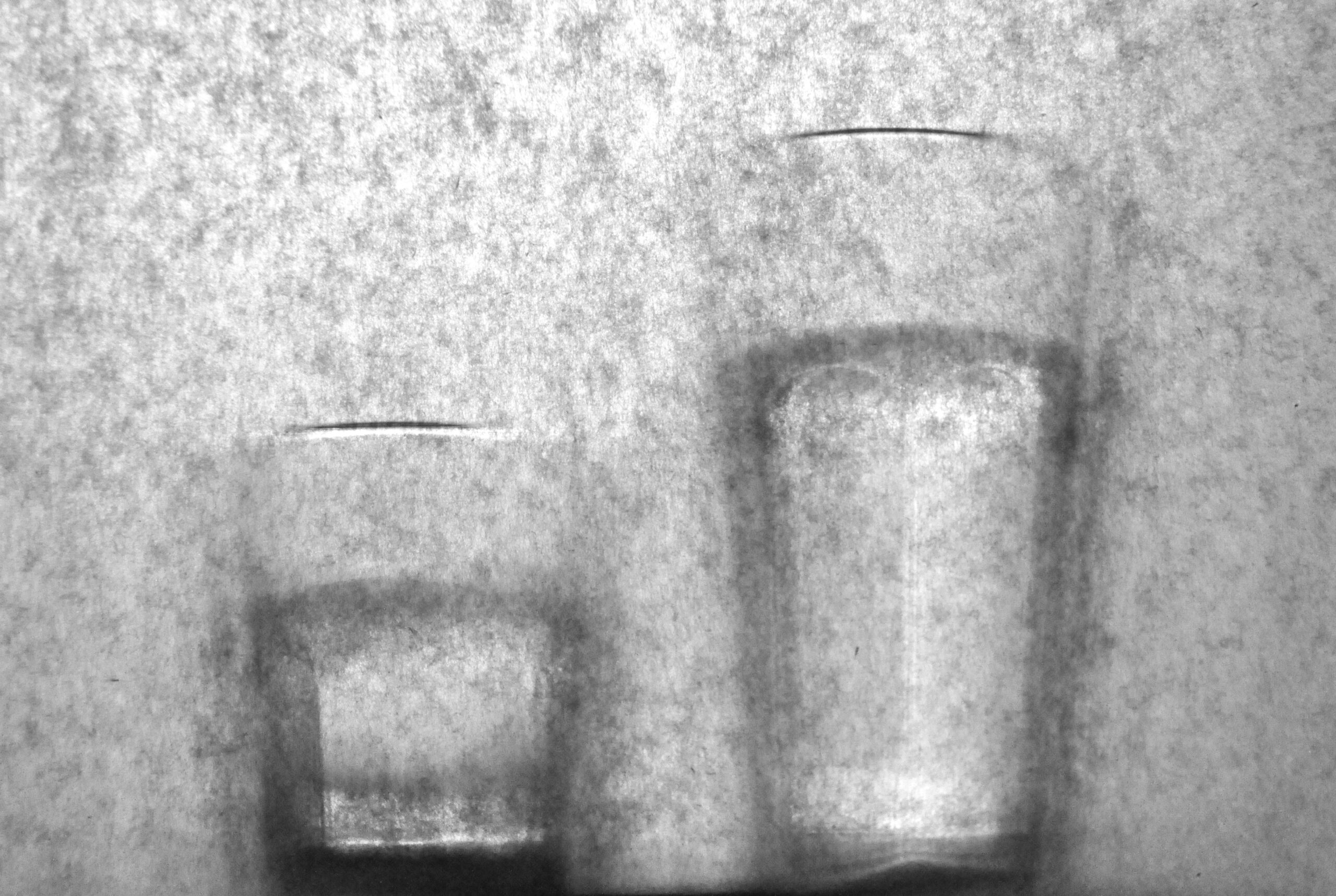
(Fig. 9) Edward Cawood: untitled – two glasses behind baking paper, digital photograph, (2020)
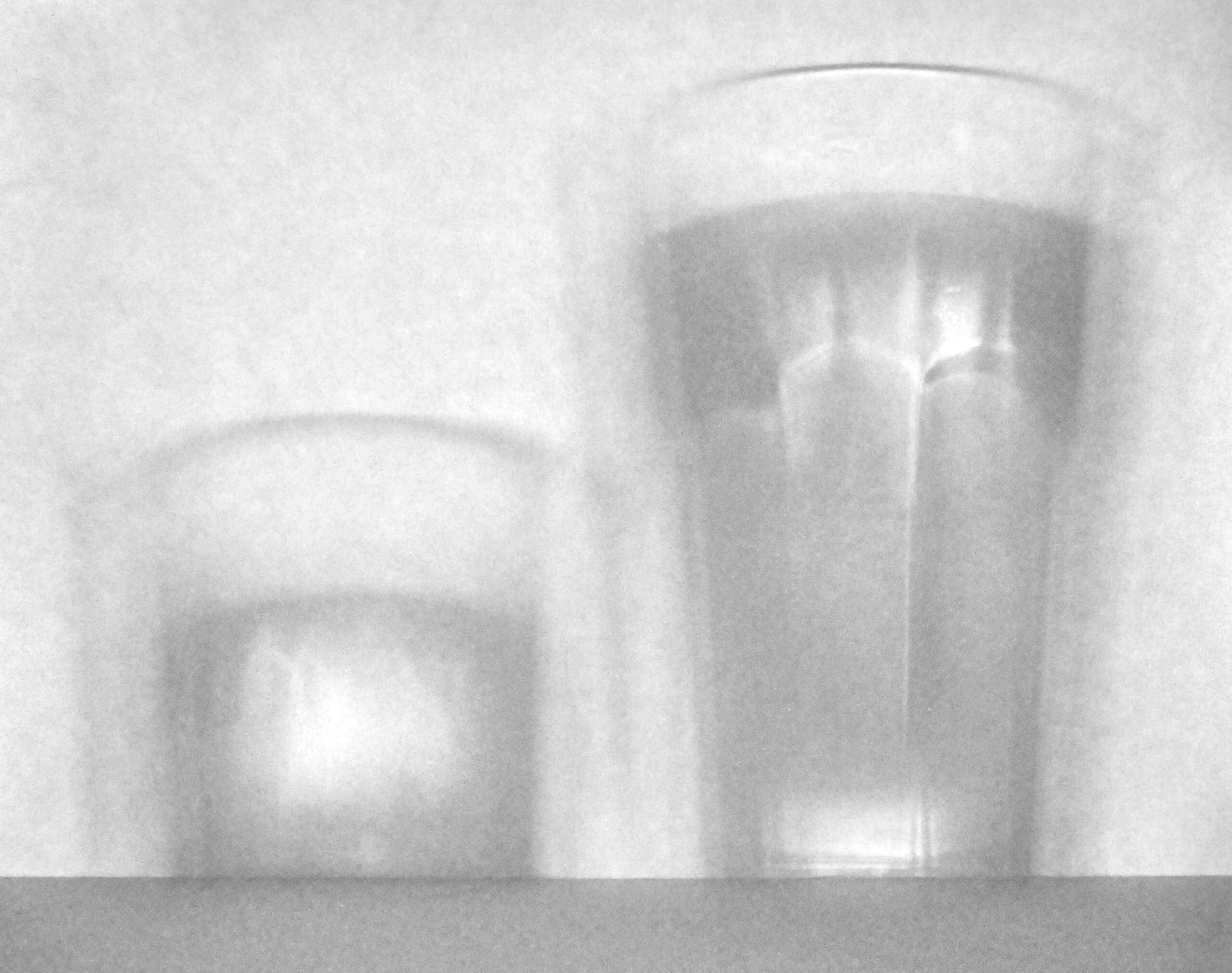
(Fig. 10) RESOLVED: Edward Cawood: ‘Half Empty / Half Full (obscured)‘, black and white digital photograph, (2020)
The resolved outcome unexpectedly diverts from the initial sculptures (Fig. 10). Photographed behind paper, the two half-full glasses cast soft shadows, presenting a dream-like form. Inspired by the beautiful mundane of Shikanosuke Yagaki’s photographs (Fig. 8), this image abstracts the concrete glasses. The lack of internal objects, however, removes some of the symbolic elements found in the sculptures, but the idea of Half Empty / Half Full perseveres.
Making and Breaking a Narrative:
The second project took inspiration from the nursery rhyme for counting Magpies, with influence from folk music and art:
“One for Sorrow,
Two for Joy.
Three for a Girl,
Four for a Boy.
Five for Silver,
Six for Gold.
Seven for a Secret,
Never to be told.“
INFLUENCE: The Unthanks, accompanied by the BBC Concert Orchestra, conducted by Stephen Bell: ‘Magpie’, Prom 27: Folk Music around Britain and Ireland, BBC4, 3 mins 59 secs, first aired 3/8/18
https://www.youtube.com/watch?v=G3tklu9Kzns

(Fig. 11) INFLUENCE: Mark Hearld, ‘Hunting Owl’, mixed media collage, 730x550mm, (2013)
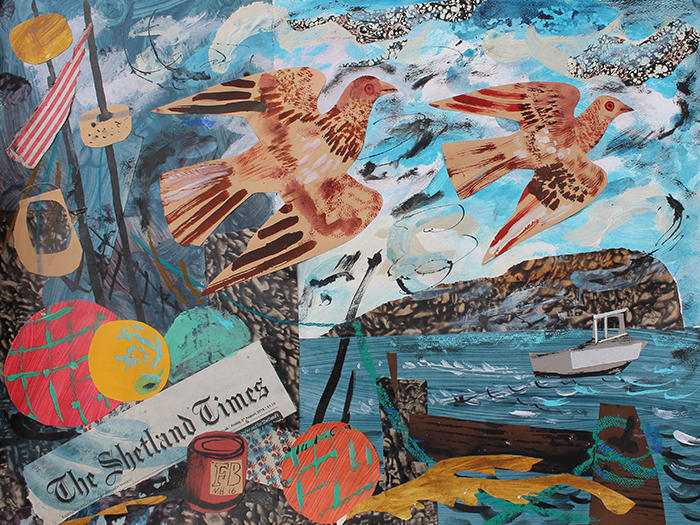
(Fig. 12) INFLUENCE: Mark Hearld: ‘The Shetland Times’, collage – acrylic, coloured paper on paper, (2016)
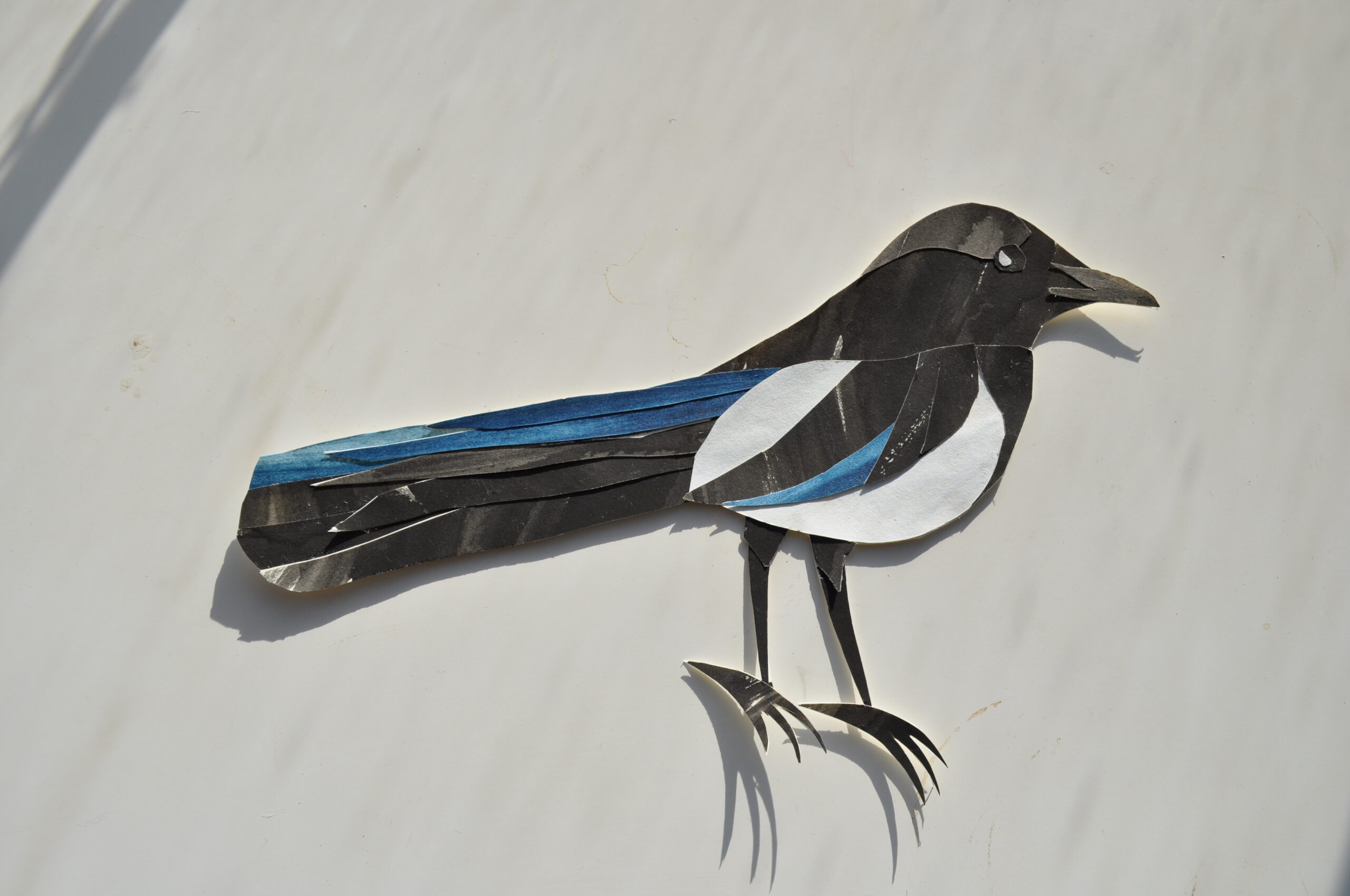
(Fig. 13) Edward Cawood: initial collaged magpie, watercolour, glue, paper on paper, (2020)

(Fig. 14) RESEARCH: Reverend Charles Swainson: ‘The folk lore and provincial names of British birds’, The Folk-lore Society, (London, 1886), p. 77
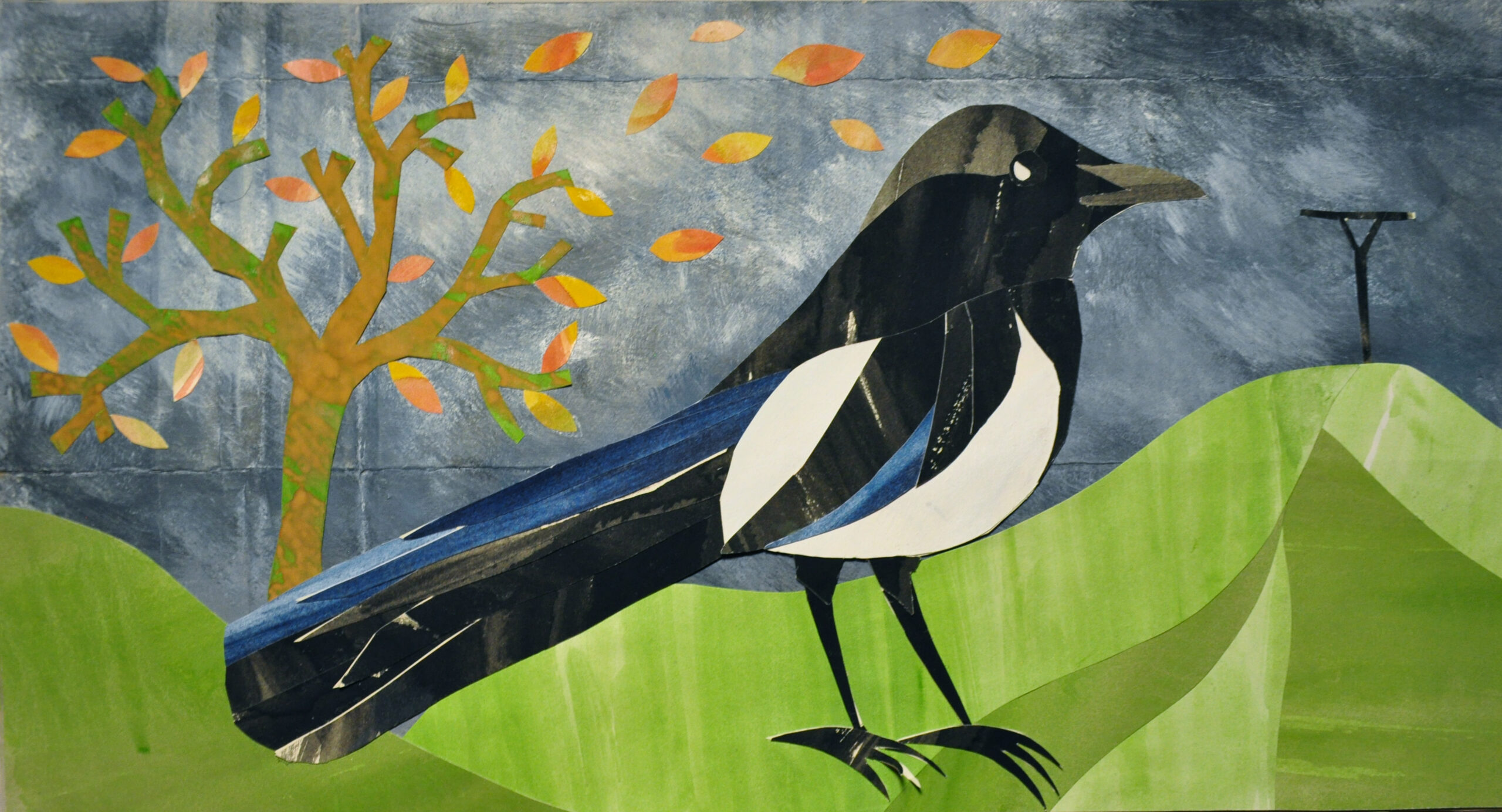
(Fig. 15) Edward Cawood – ‘One for Sorrow (in autumn)‘ – watercolour, acrylic paint, paper, card, glue and cardboard, 400mmx215mm, (2020)
Inspired by Mark Hearld’s work (Fig. 11 & 12), the first collage depicting a single magpie was an experiment into collaging to create a scene (Fig. 15). Although the placement and arrangement lack perfection – devoid of any foreground and with limited depth – this collage enabled me to test simplifying shapes and colours.

(Fig. 16) INFLUENCE: Eric Ravilious: ‘The Vale of the White Horse’, graphite and watercolour on paper, 587×690mm, (c.1939)
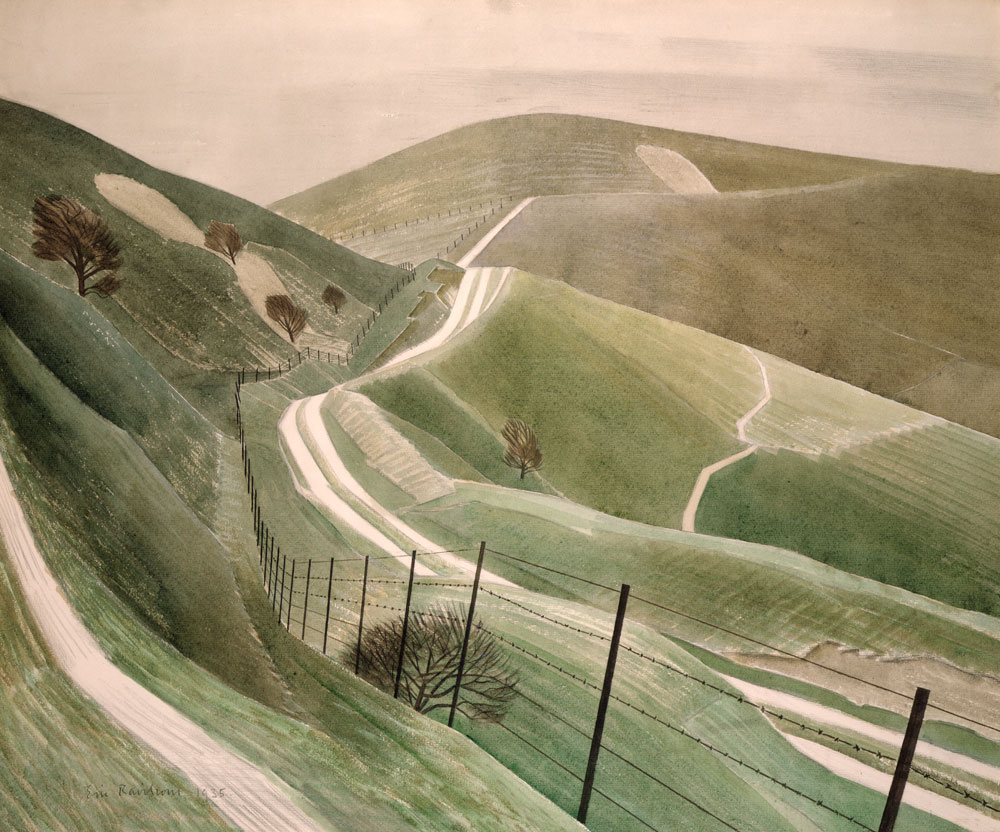
(Fig. 17) INFLUENCE: Eric Ravilious, ‘Chalk Paths’, graphite and watercolour
on paper, (1935)
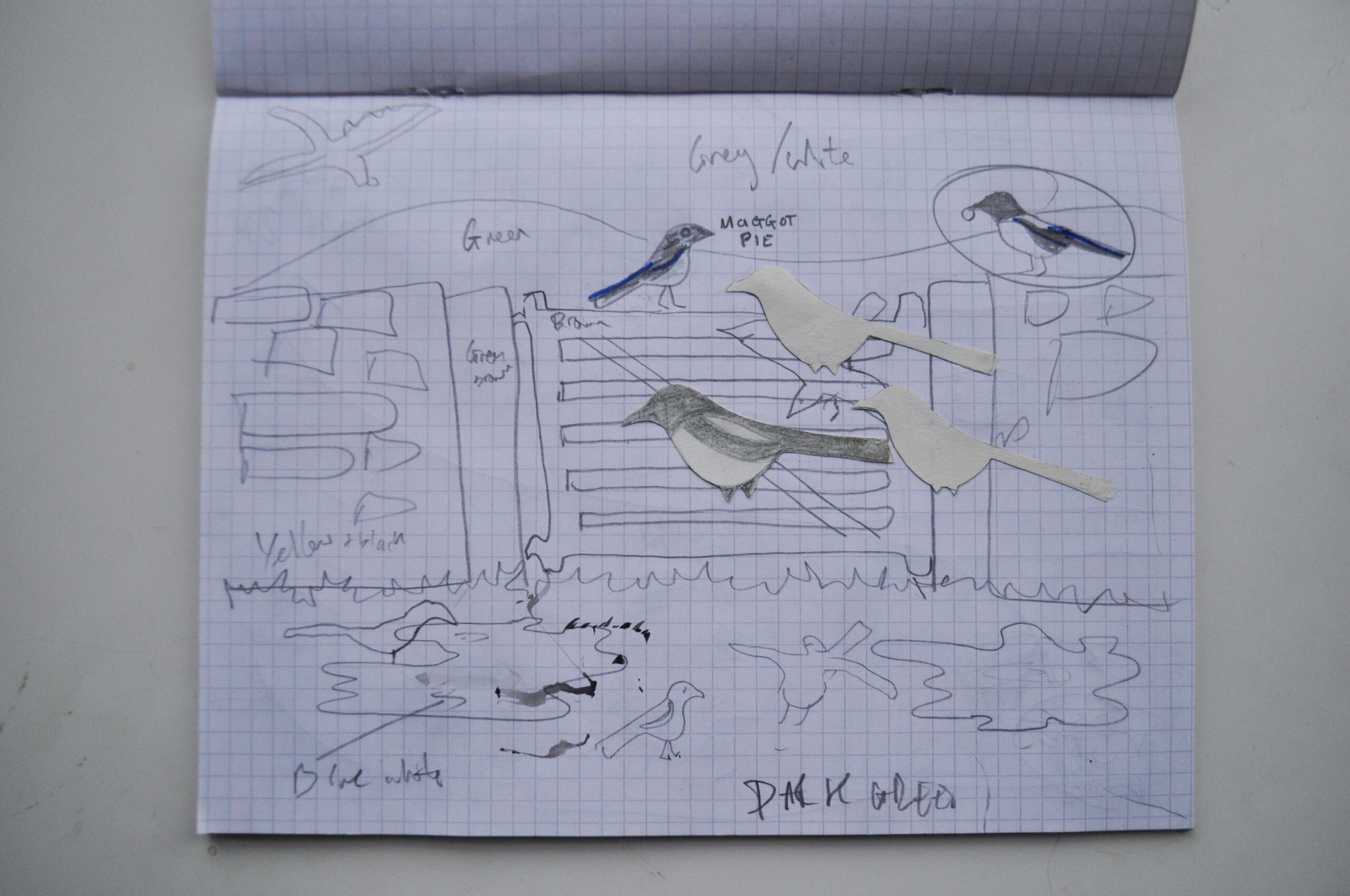
(Fig. 18) Edward Cawood: sketchbook page showing plan of collage featuring 7 magpies with notation on colour, pencil, paper, 229x178mm (2020)

(Fig. 19) Edward Cawood: ‘Seven for a Secret‘, collage – watercolour, glue and cartridge paper, 210mmx297mm, (2020)
The second collage (Fig. 19), inspired by Ravilious (Fig. 16 & 17), was much more carefully planned (Fig. 18), resulting in a simple, well-constructed piece.

(Fig. 20) INFLUENCE: Robert Macfarlane & Jackie Morris: ‘Magpie’ from ‘The Lost Words: A Spell Book’, (2017)

(Fig. 21) Edward Cawood: storyboard grid of 9 digital scans of collage, captioned, approx. 640x900mm (2020)
I wanted to include the actual nursery rhyme, which led me to create a story-board series (Fig. 21). My initial thoughts were to bind the pages like a children’s book in a large print format, but without the facilities, I decided to create two short video sequences:
Resolved:
(Fig. 22) Edward Cawood: ‘Seven for a Secret’, digital animation without sound, 10 seconds, (2020):
(Fig. 23) Edward Cawood: ‘Seven for a Secret’, digital animation with sound, 11 seconds, (2020):
The first (Fig. 22) sequences the pages, without sound, and the second includes the sound of magpies calling (Fig. 23). The appearance of each magpie, one after the other, is rhythmic and story-like.
The use of sound, although more engaging, draws away from the rhyme – perhaps a recording of it would have been more successful.
Mapping the Soundscape:
The third project initially drew from the sounds of urban Edinburgh:
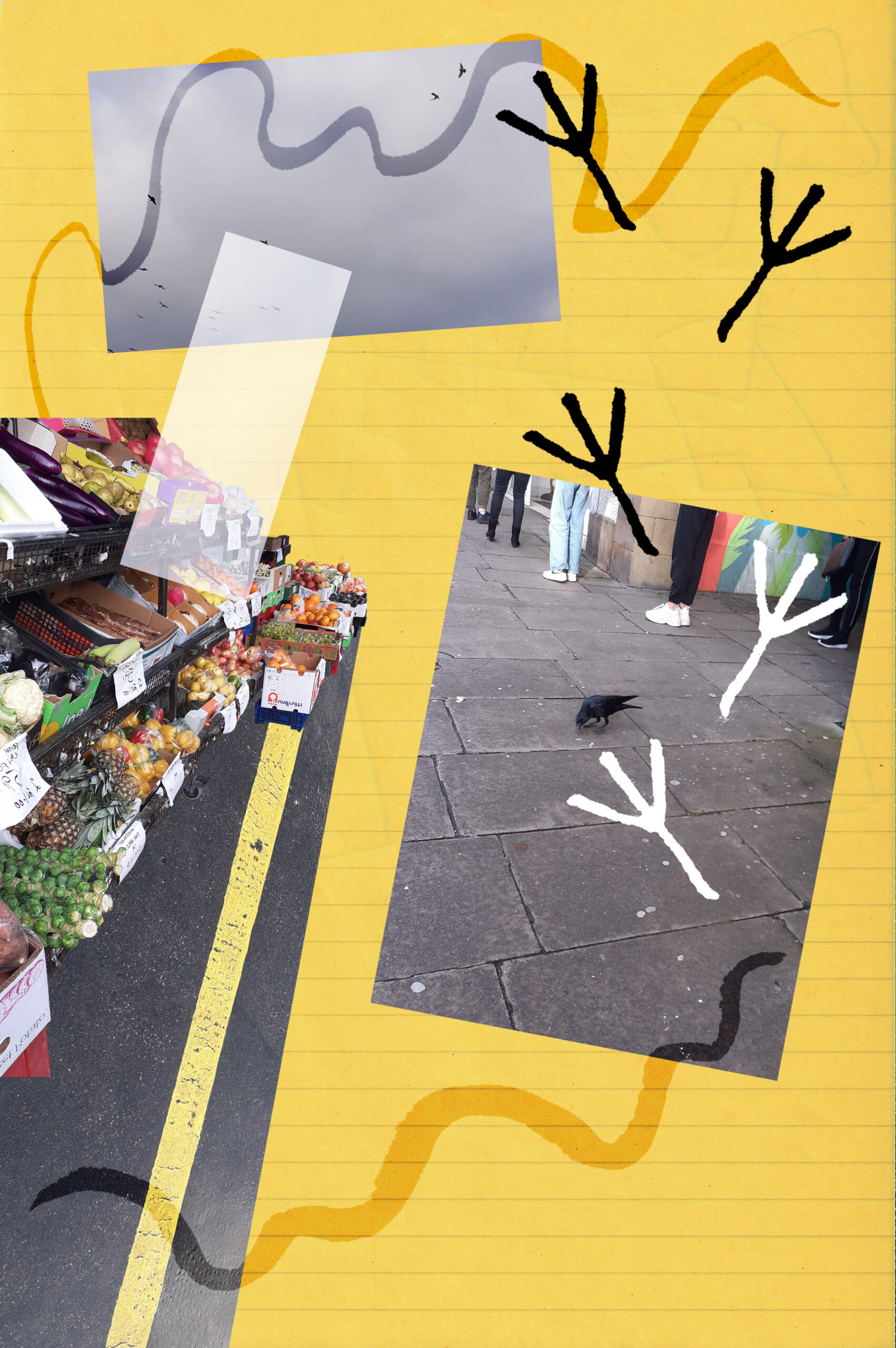
(Fig. 24) Edward Cawood: ‘Sounds of South Clerk Street on a Tuesday Morning’, mixed-media digital collage, 210mmx297mm, (November 2020)
The initial digital collage (Fig. 24) simply presents visual records (photographs) of the sound of South Clerk Street.
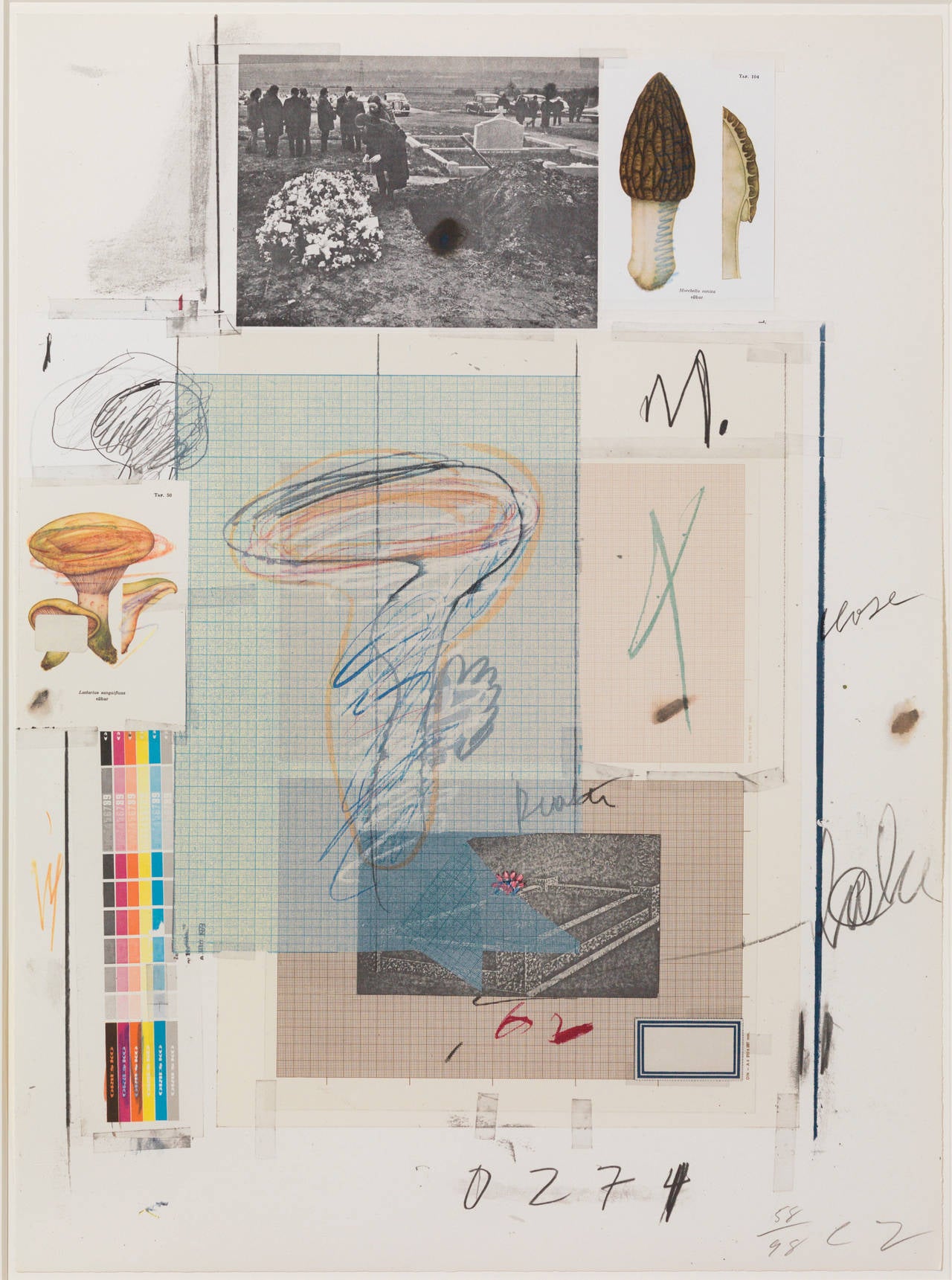
(Fig. 25) INFLUENCE: Cy Twombly: ‘No. VII’ in ‘Natural History, Part I, Mushrooms’, lithograph, mixed media on paper, 758×558 mm, (1974)
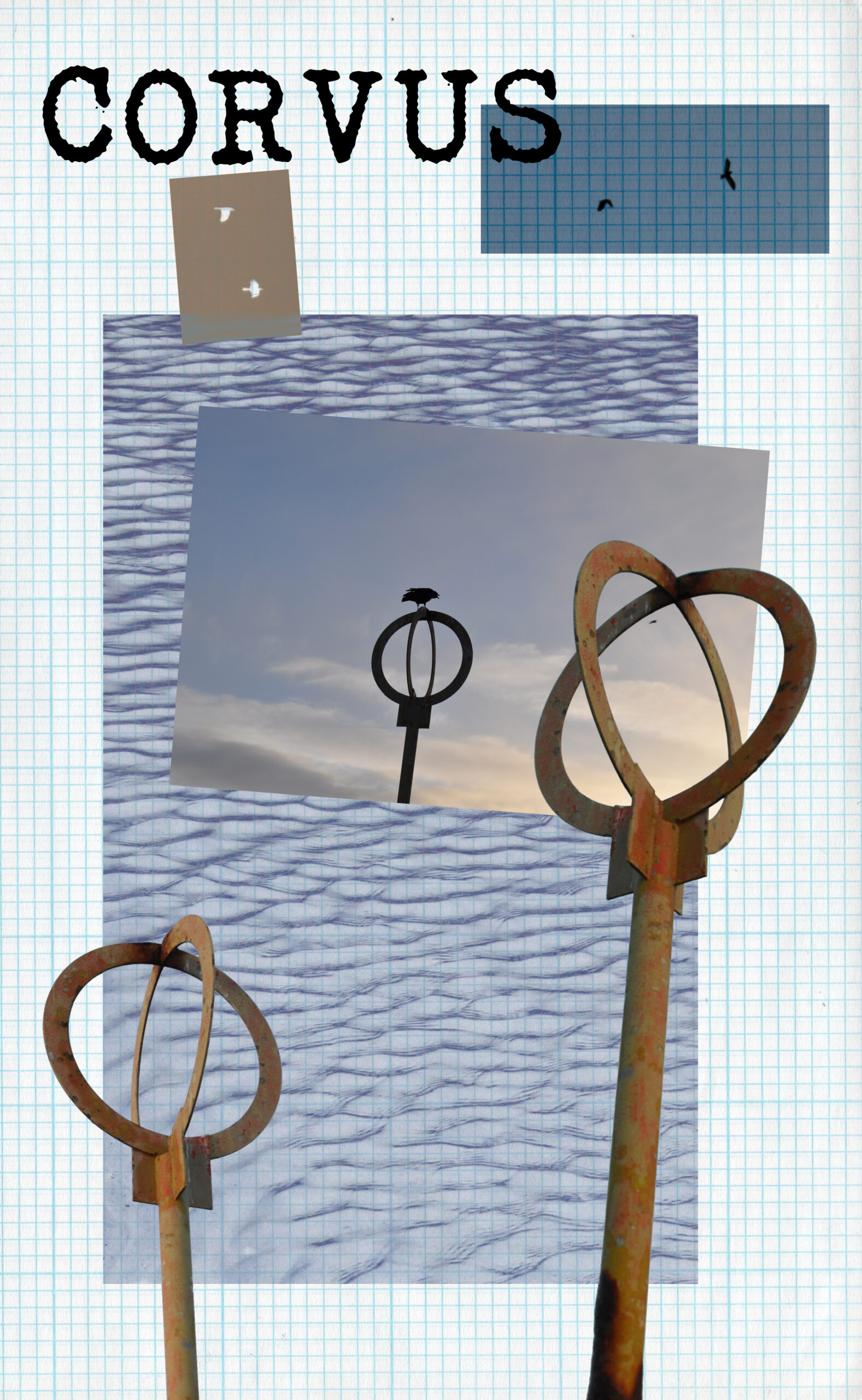
(Fig. 26) SEMI RESOLVED: Edward Cawood: ‘CORVUS’, digital collage, 210mmx297mm, (2020)
Inspired by Cy Twombly’s work (Fig 25), the semi-resolved second digital collage (Fig. 26) focused on the sounds of crows and the colours of Portobello Beach. Although a simple arrangement, the poster-like collage is coherent and well-coloured, focusing the viewer on the central cawing crow.
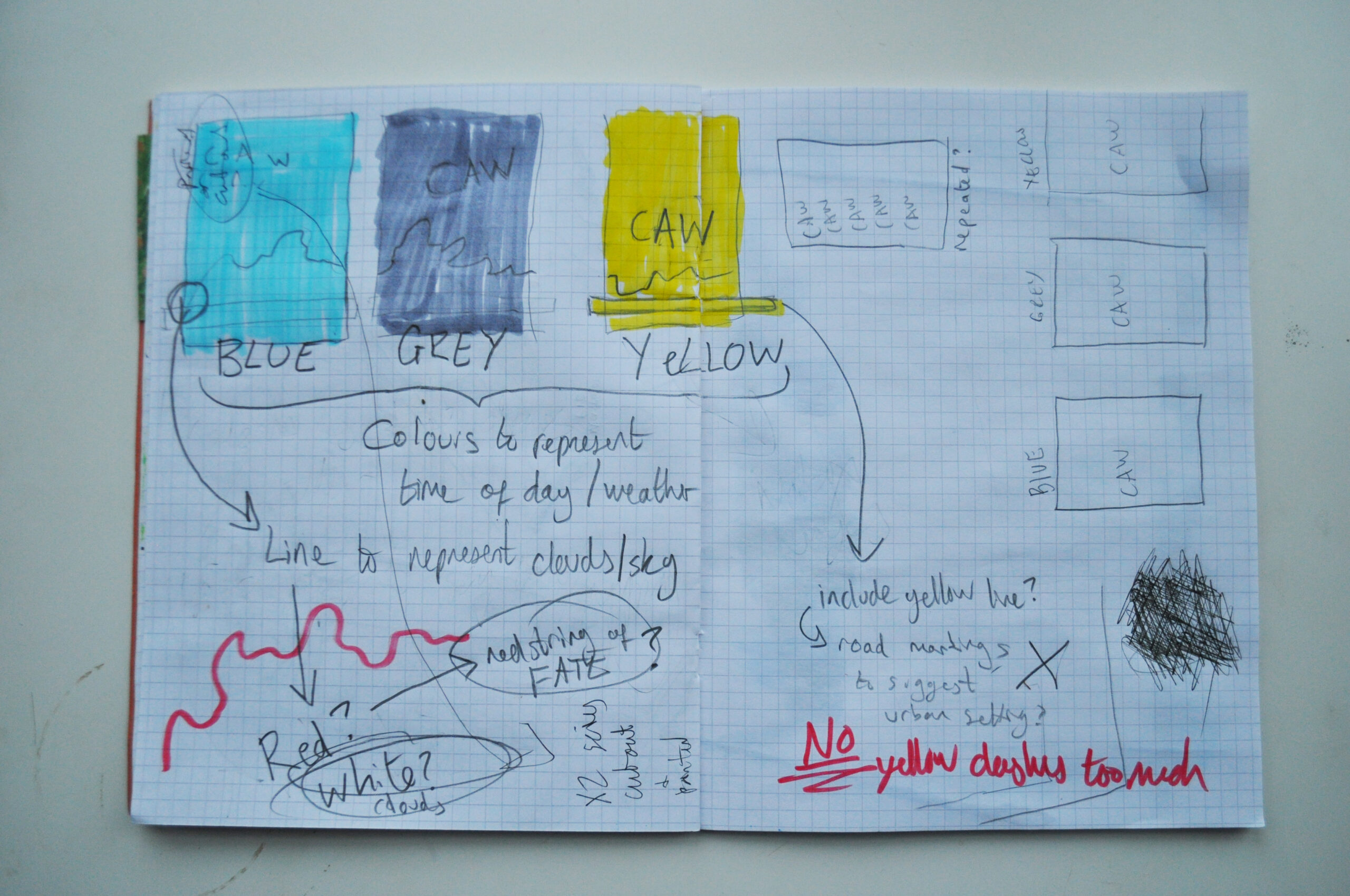
(Fig. 27) Edward Cawood: sketchbook page showing plan of mock-up triptych featuring the word caw on varying coloured backgrounds, 458x356mm, (2020)
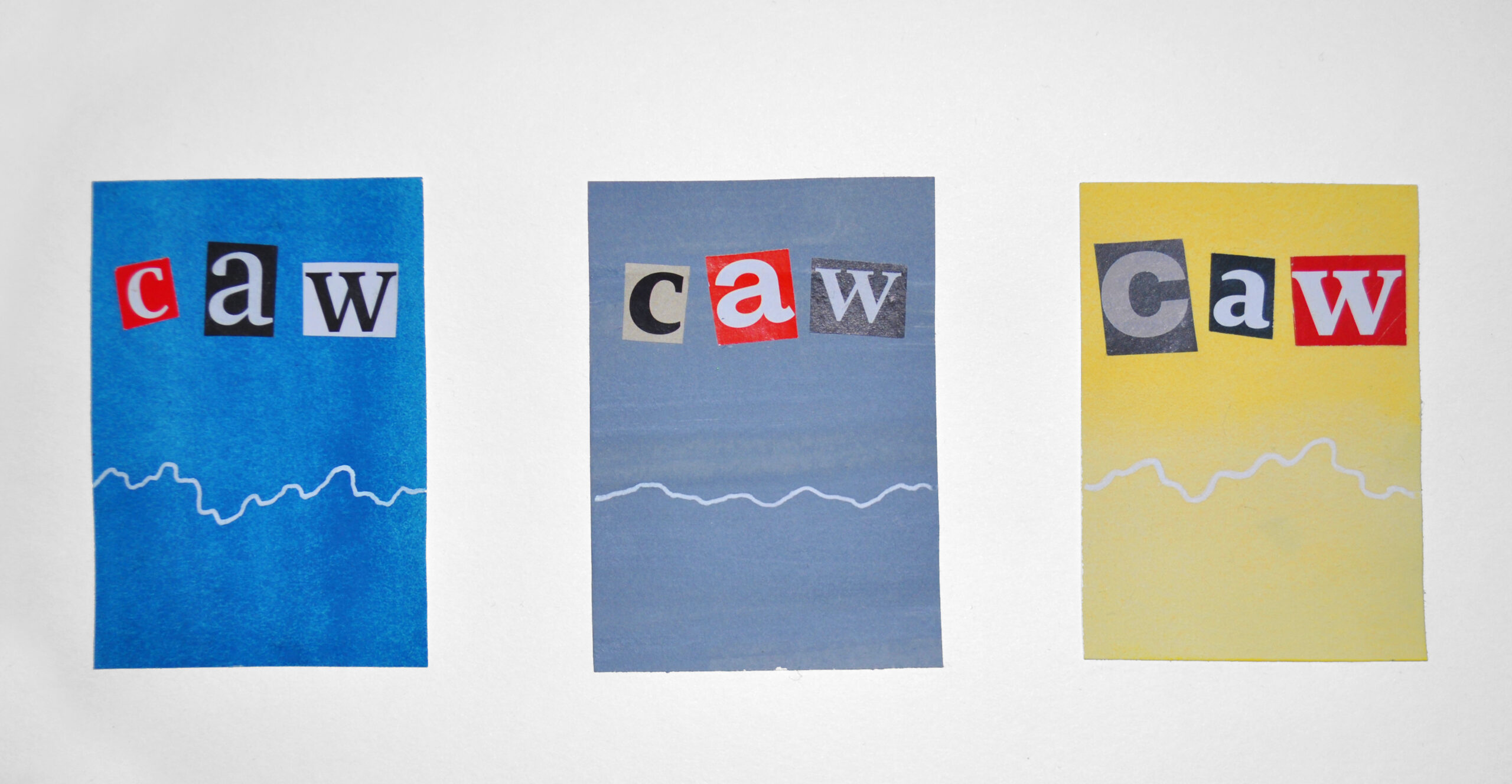
(Fig. 27) Edward Cawood: ‘Caw continued’, mock-up triptych, watercolour, pen, newspaper and paper, 210mmx297mm, (2020)
The aim of the triptych (Fig. 28) was to represent the incessant calling and presence of crows in Edinburgh. I wanted this triptych to be large, but without materials or logistics, it was left only as an idea.

(Fig. 29) INFLUENCE: Kurt Schwitters: ‘Magic’, collage – paper on paper, 131×06 mm, (c.1936-40)
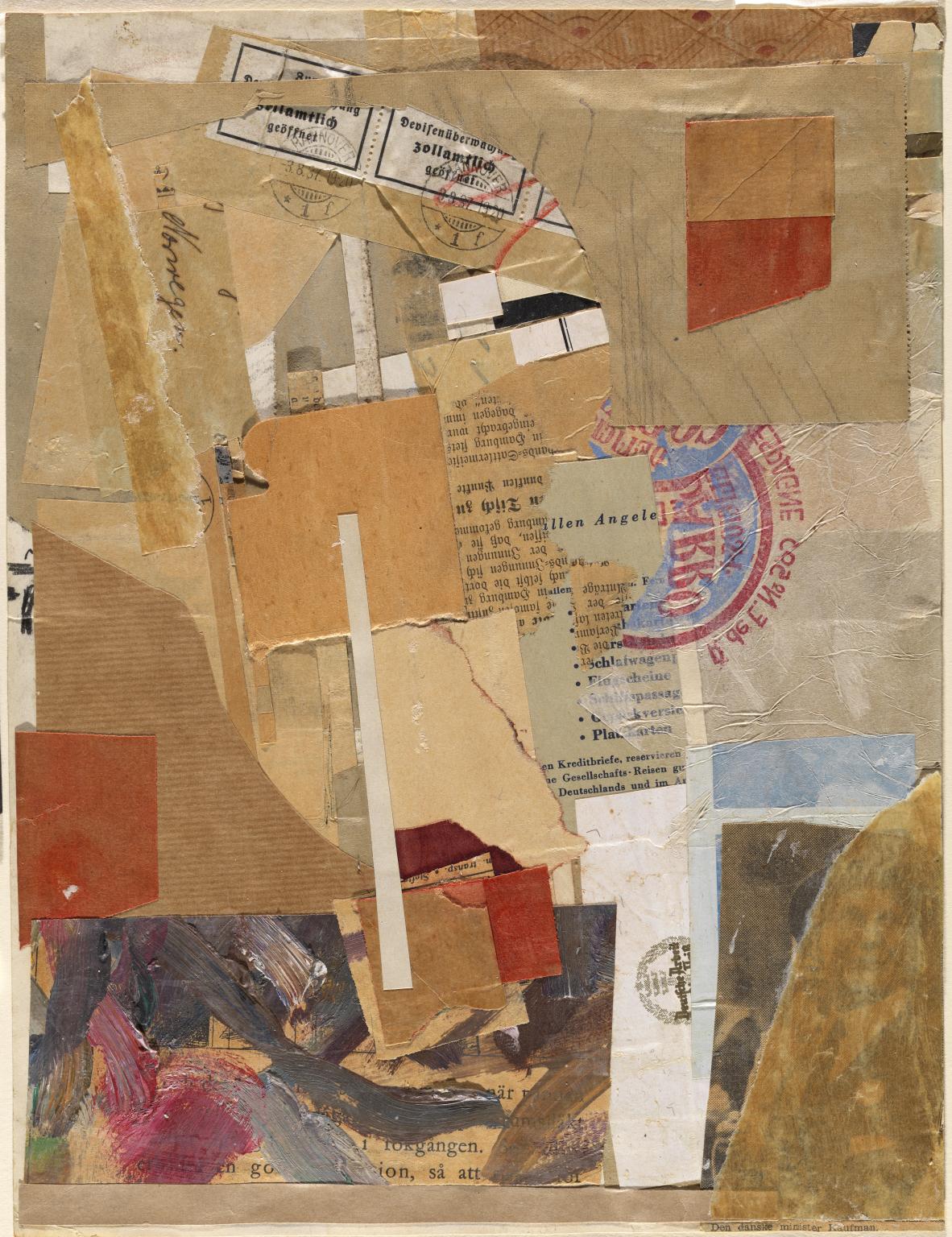
(Fig. 30) INFLUENCE: Kurt Schwitters: ‘Opened by Customs’, collage – paper, printed paper, oil paint and graphite on paper, 523×421mm, (1937-8)
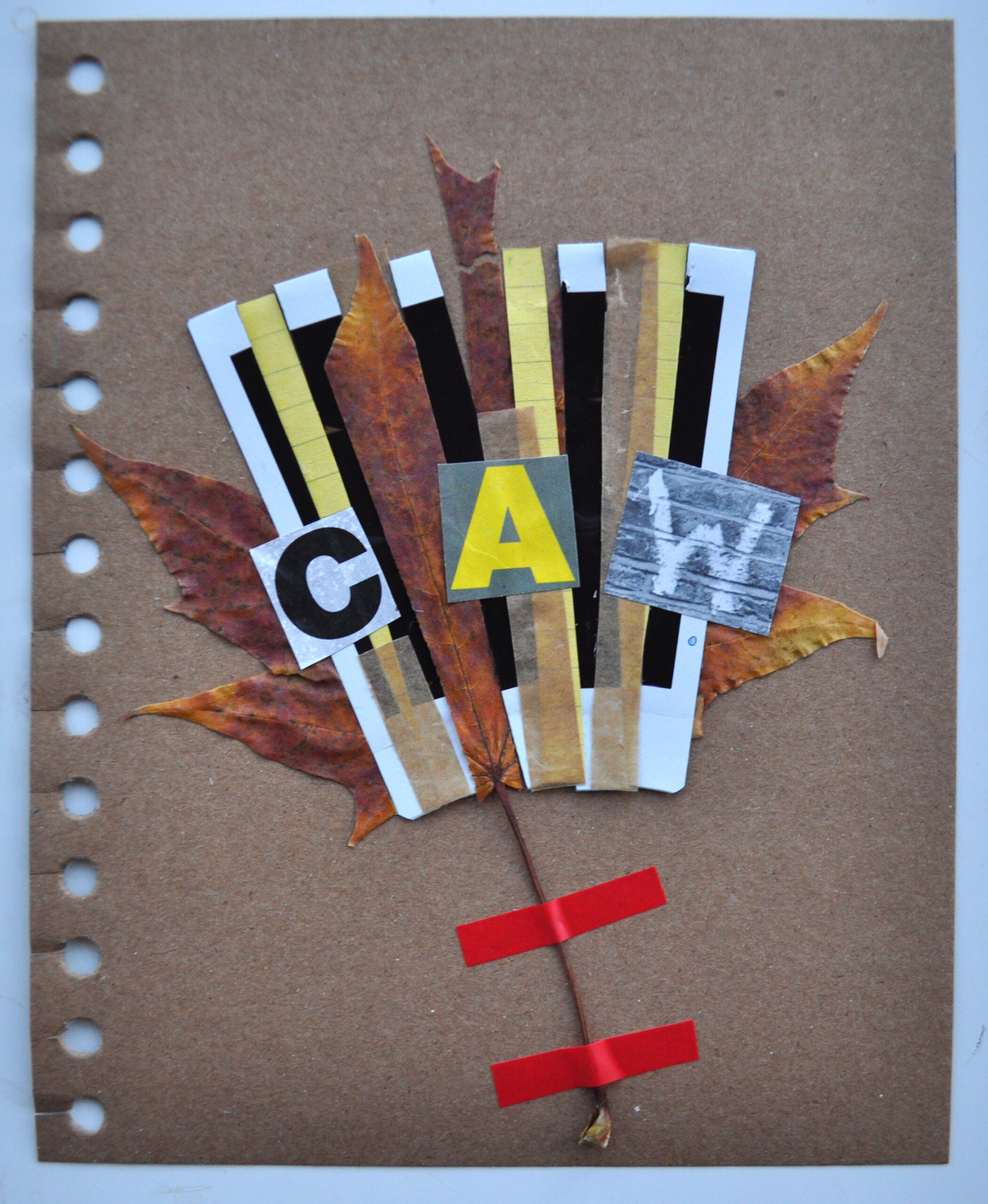
(Fig. 31) Edward Cawood: ‘untitled’, polaroid, paper and leaf on card, 145mm x 180mm, (2020)
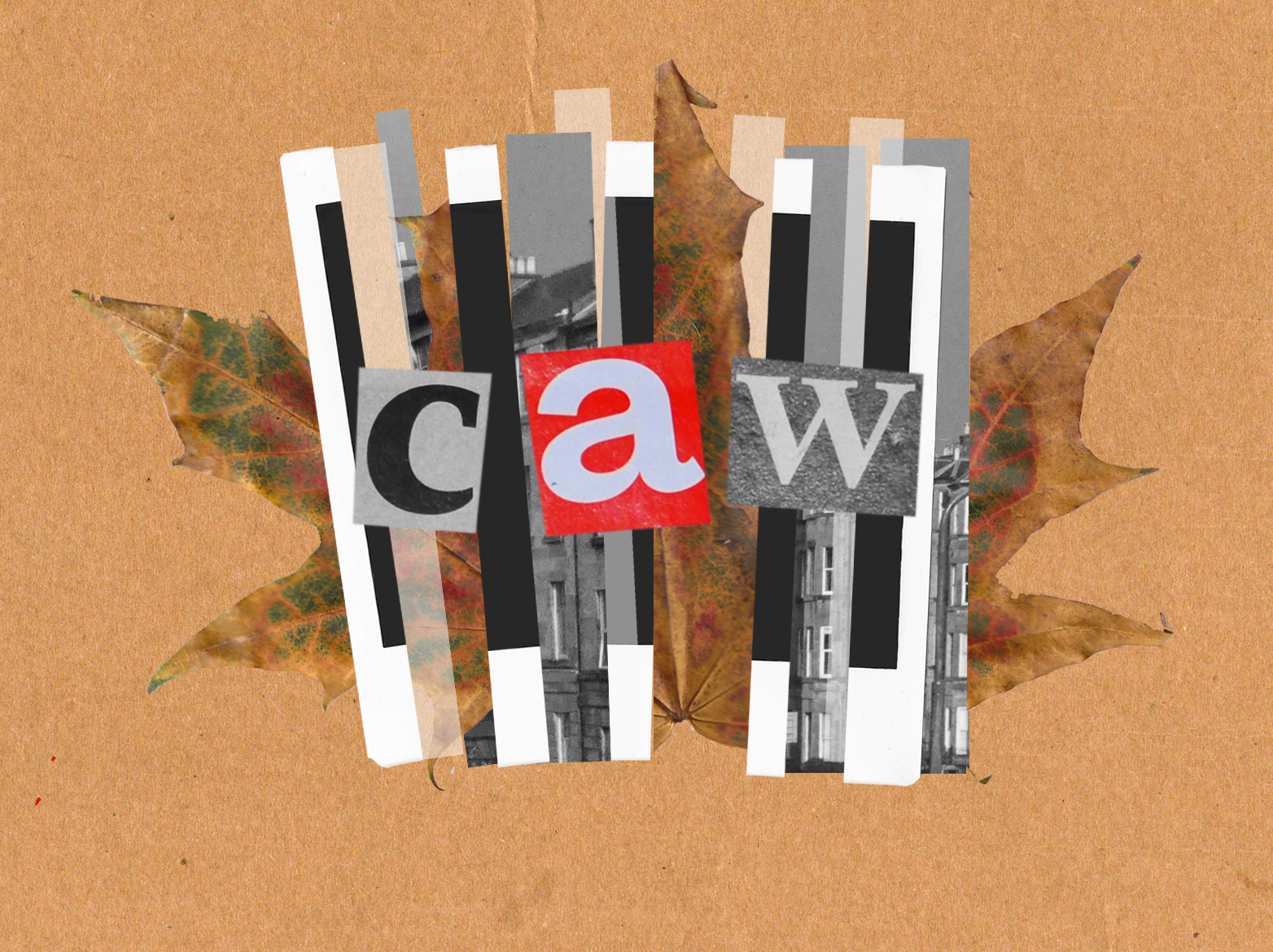
(Fig. 32) RESOLVED: Edward Cawood: ‘CaW’, mixed media digital collage, (2020)
The final resolved piece (Fig. 32) is a successful development inspired by Kurt Schwitters (Fig. 29 & 30). Digitally arranged, the collage presents elements of Edinburgh (a leaf from the Meadows and a photograph from my window), over which reads CaW. The aim was to represent the incessant noise of crows in my interaction with the city. The arrangement follows the shape of the leaf, giving it form, but without cluttering. Successfully the elements underneath CaW do not distract from the word, giving it focus.


Leave a Reply